Tips for increasing job shop employee retention and preventing knowledge drain
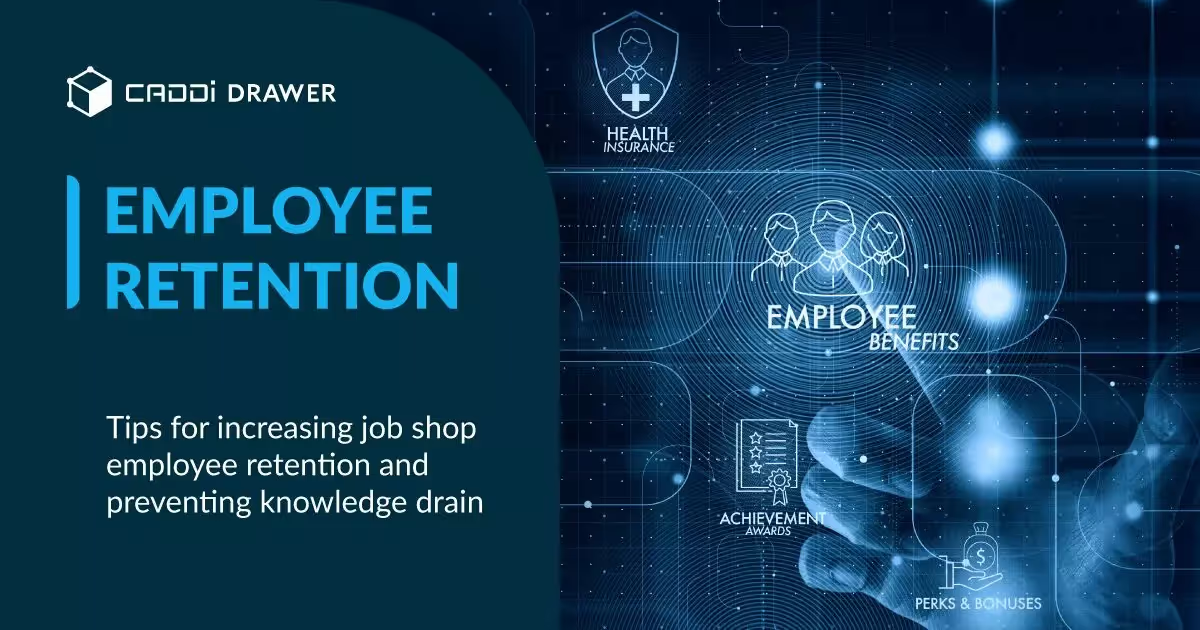
Table of Contents

The U.S. Manufacturing Labor Shortage
Picture this: you’re a job shop owner, and you’ve just landed a big contract. You’re excited about the opportunity, but then reality hits – you don’t have enough skilled workers to get the job done. This scenario is all too familiar for many in the manufacturing industry.
The U.S. manufacturing sector is facing a labor shortage crisis, and it’s only expected to worsen in the coming years. According to a 2021 study by Deloitte and The Manufacturing Institute, the industry could see a shortage of 2.1 million workers by 2030. This shortage is due to several factors:
- An aging workforce, with many skilled workers nearing retirement age
- Difficulty attracting younger generations to manufacturing careers
- A widening skills gap, as technology advances faster than worker training
The consequences of this labor shortage are significant. Job shops and fabricators may struggle to meet production demands, leading to longer lead times and decreased customer satisfaction. They may also face increased labor costs as they compete for a limited pool of skilled workers.
Knowledge Drain Risk
Moreover, the knowledge drain that occurs when experienced workers retire can be devastating. Valuable skills, techniques, and institutional knowledge are lost, leaving job shops scrambling to train new hires and maintain quality standards.
As the manufacturing industry continues to evolve, with automation and digital technologies transforming the factory floor, the need for skilled workers will only increase. Job shops that fail to address the labor shortage and knowledge drain risk falling behind their competitors and losing market share.
So, what can be done to combat this crisis? In the following sections, we’ll explore strategies for increasing employee retention and preventing knowledge drain in your job shop.
Challenges in Employee Retention at Job Shops
Employee retention is a significant challenge for job shops, with several factors contributing to high turnover rates. Let’s dive into the main challenges:
Competitive job market: With the manufacturing industry facing a labor shortage, skilled workers are in high demand. Job shops often find themselves competing with larger companies that can offer better pay, benefits, and career advancement opportunities.
Lack of employee engagement: Many job shops struggle to keep their employees engaged and motivated. Factors such as monotonous tasks, limited training opportunities, and poor communication can lead to disengagement and ultimately, turnover.
Inadequate training and development: Job shops may not have the resources or expertise to provide comprehensive training programs. This can leave employees feeling unprepared for their roles and unsupported in their professional growth.
Challenging work environment: Manufacturing work can be physically demanding, with long hours, noisy environments, and potential safety hazards. If job shops don’t prioritize employee well-being and safety, workers may seek employment elsewhere.
Limited career advancement: In smaller job shops, there may be few opportunities for employees to advance their careers. Without a clear path for growth, workers may feel stuck and look for opportunities outside the company.
The high turnover rates resulting from these challenges can lead to a significant problem: knowledge drain. When experienced employees leave, they take with them valuable skills, expertise, and institutional knowledge. This can be particularly devastating for job shops, where specific processes and techniques may have been honed over years of experience.
Knowledge drain can lead to several risks:
- Decreased productivity, as new hires take time to learn and adapt
- Increased errors and quality issues, as inexperienced workers may struggle to meet standards
- Lost relationships with customers and suppliers, as key contacts may have left the company
- Increased training costs, as job shops must continually onboard and train new employees
The constant cycle of hiring and training new workers can be a significant drain on resources, both in terms of time and money. Job shops may find themselves trapped in a vicious cycle, unable to retain employees long enough to build a stable, skilled workforce.
To break this cycle and secure their future success, job shops must prioritize employee retention and knowledge transfer. In the next section, we’ll explore strategies for achieving these goals.
Solutions for Employee Retention at Job Shops
So, how can job shops break the cycle of high turnover and knowledge drain? The key is to create a work environment that values, supports, and engages employees. Here are some strategies to boost retention:
1. Offer competitive compensation and benefits
While job shops may not be able to match the salaries of larger corporations, they can still offer competitive compensation packages. This includes not only base pay but also benefits such as health insurance, retirement plans, and paid time off. By showing employees that their well-being is a priority, job shops can improve retention.
2. Provide comprehensive training and development
Investing in employee training and development is crucial for retention. This includes not only initial onboarding but also ongoing training to help workers adapt to new technologies and processes. Job shops can partner with local colleges or trade schools to provide training programs or even develop their own in-house training. By supporting employees’ professional growth, job shops can foster a sense of loyalty and commitment.
3. Foster a positive work culture
A positive work culture is essential for employee retention. This includes creating a supportive, collaborative environment where employees feel valued and respected. Encourage open communication, recognize employee achievements, and provide opportunities for social interaction and team building. When employees feel like they are part of a community, they are more likely to stay.
4. Implement employee engagement initiatives
Engaged employees are more likely to stick around. Job shops can implement initiatives such as employee surveys, suggestion programs, and task forces to give workers a voice in decision-making. Encourage employees to share their ideas and feedback, and take action on their suggestions. By involving employees in the company’s success, job shops can boost engagement and retention.
5. Offer flexible work arrangements
In today’s world, flexibility is key. Job shops can offer flexible work arrangements such as flexible hours, job sharing, or even remote work (when possible). This can be particularly attractive to younger generations who value work-life balance. By accommodating employees’ personal needs, job shops can show that they care about their well-being and improve retention.
6. Provide opportunities for advancement
Employees are more likely to stay if they see a future with the company. Job shops can provide opportunities for advancement, such as promotions, leadership roles, or cross-training in different departments. By showing employees that there is a path for growth within the company, job shops can improve retention and build a strong pipeline of future leaders.
7. Implement knowledge transfer strategies
To prevent knowledge drain, job shops must implement strategies for capturing and transferring knowledge from experienced workers to new hires. This can include mentoring programs, documentation of processes and procedures, and cross-training initiatives. By ensuring that valuable knowledge is not lost when employees leave, job shops can maintain continuity and quality.
Implementing these strategies may require an initial investment of time and resources, but the long-term benefits are clear. By creating a work environment that values and supports employees, job shops can improve retention, reduce turnover costs, and build a skilled, stable workforce that can adapt to the challenges of the future.
Leveraging CADDi Drawer for Employee Retention and Knowledge Transfer
In addition to the strategies discussed above, job shops can also leverage digital tools like CADDi Drawer to support employee retention and knowledge transfer efforts. CADDi Drawer is a cloud-based solution that centralizes and links various data, including CAD drawings, making it easier for employees to access and utilize critical information.
Here are some ways CADDi Drawer can help:
Streamlining time-consuming tasks
One of the biggest frustrations for employees is spending excessive time on tedious, manual tasks. With CADDi Drawer, employees can quickly search for and retrieve the drawings they need, rather than sifting through physical files or unorganized digital folders. This not only saves time but also reduces frustration, improving overall job satisfaction.
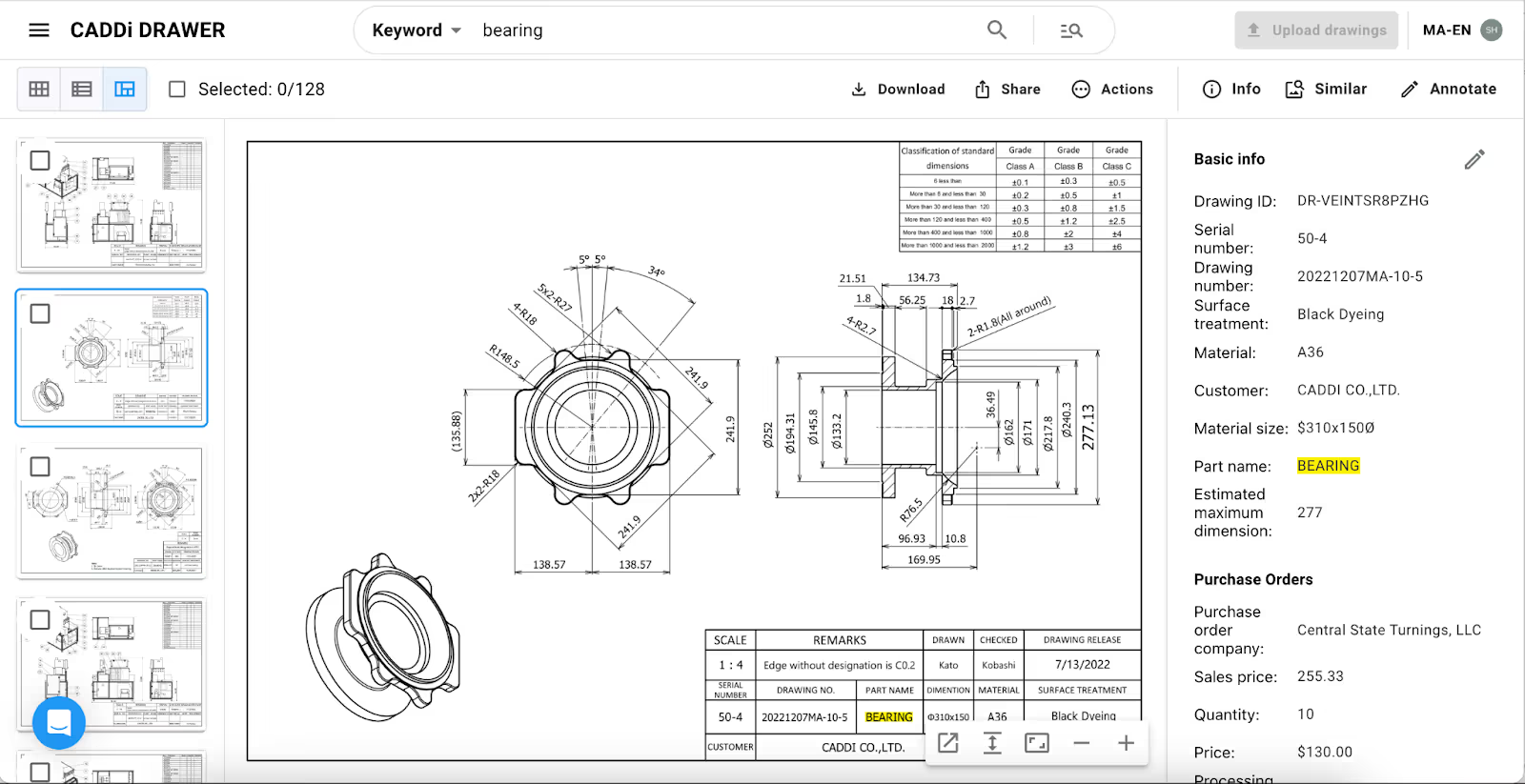
Facilitating knowledge transfer
When experienced employees leave, they often take valuable knowledge with them. CADDi Drawer helps mitigate this issue by serving as a centralized repository for drawings and associated data. New hires can easily access past projects, understanding how similar drawings were handled and learning from the collective knowledge of the organization.
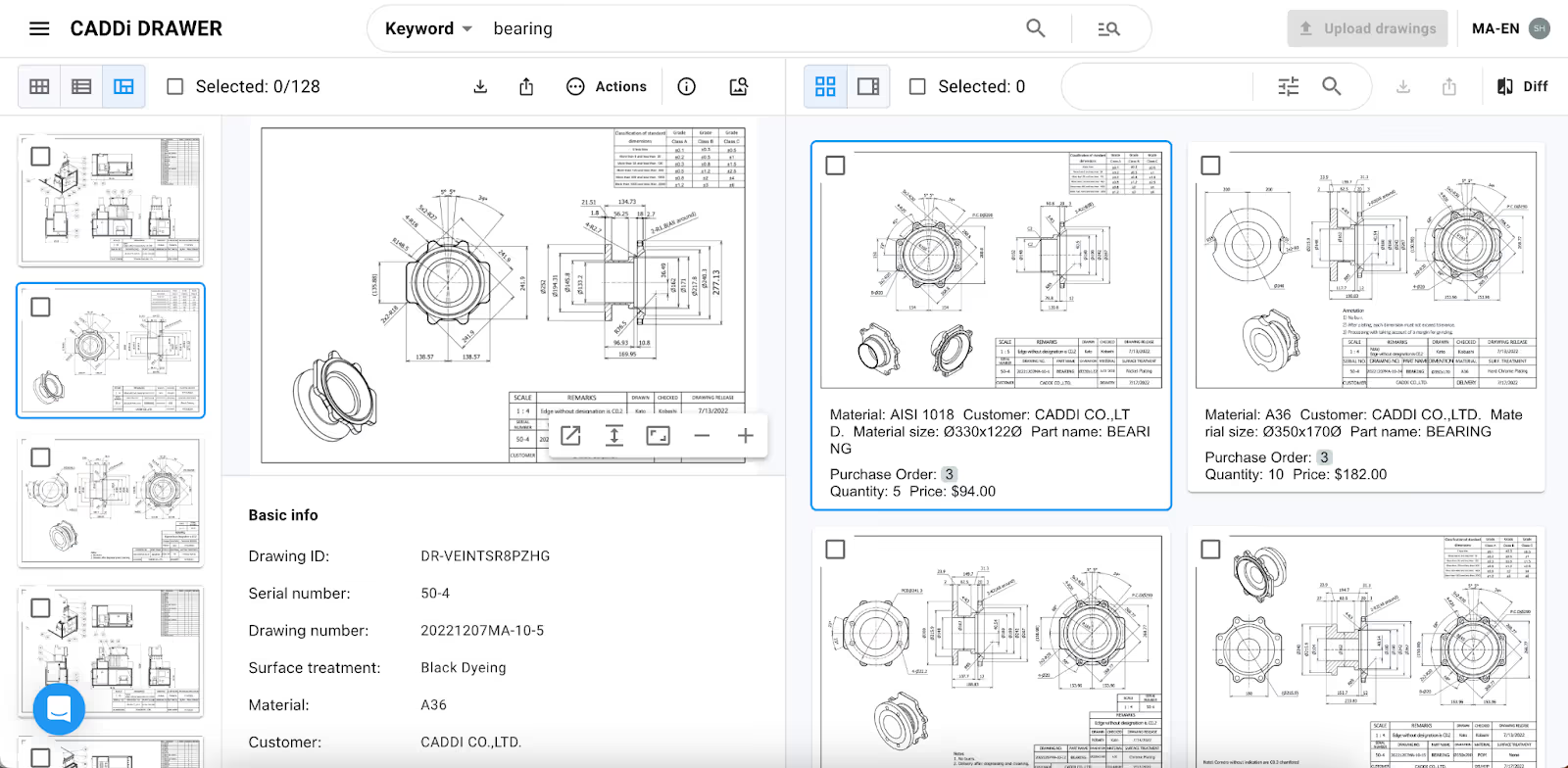
Enabling cross-functional collaboration
Silos between departments can lead to inefficiencies and miscommunication. CADDi Drawer breaks down these barriers by providing a common platform for sharing and accessing information. Whether it’s the sales team providing context on a customer’s requirements or the manufacturing team adding notes about production challenges, everyone can collaborate more effectively.
Supporting continuous improvement
With CADDi Drawer, employees can easily identify opportunities for improvement by analyzing past projects. They can see what worked well and what didn’t, using this information to refine processes and drive innovation. This not only benefits the company but also helps employees feel more engaged and valued, as they’re actively contributing to the organization’s success.
Enhancing remote work capabilities
In today’s world, the ability to work remotely is increasingly important for employee retention. CADDi Drawer enables remote access to critical information, allowing employees to work effectively from anywhere. This flexibility can be a key differentiator in attracting and retaining top talent.
By leveraging tools like CADDi Drawer, job shops can create a more efficient, collaborative, and engaging work environment. Employees can focus on high-value tasks, learn from data in the past transactions, and contribute to continuous improvement efforts. This not only helps with retention but also ensures that valuable knowledge is preserved and built upon over time.
The U.S. Manufacturing Labor Shortage
Picture this: you’re a job shop owner, and you’ve just landed a big contract. You’re excited about the opportunity, but then reality hits – you don’t have enough skilled workers to get the job done. This scenario is all too familiar for many in the manufacturing industry.
The U.S. manufacturing sector is facing a labor shortage crisis, and it’s only expected to worsen in the coming years. According to a 2021 study by Deloitte and The Manufacturing Institute, the industry could see a shortage of 2.1 million workers by 2030. This shortage is due to several factors:
- An aging workforce, with many skilled workers nearing retirement age
- Difficulty attracting younger generations to manufacturing careers
- A widening skills gap, as technology advances faster than worker training
The consequences of this labor shortage are significant. Job shops and fabricators may struggle to meet production demands, leading to longer lead times and decreased customer satisfaction. They may also face increased labor costs as they compete for a limited pool of skilled workers.
Knowledge Drain Risk
Moreover, the knowledge drain that occurs when experienced workers retire can be devastating. Valuable skills, techniques, and institutional knowledge are lost, leaving job shops scrambling to train new hires and maintain quality standards.
As the manufacturing industry continues to evolve, with automation and digital technologies transforming the factory floor, the need for skilled workers will only increase. Job shops that fail to address the labor shortage and knowledge drain risk falling behind their competitors and losing market share.
So, what can be done to combat this crisis? In the following sections, we’ll explore strategies for increasing employee retention and preventing knowledge drain in your job shop.
Challenges in Employee Retention at Job Shops
Employee retention is a significant challenge for job shops, with several factors contributing to high turnover rates. Let’s dive into the main challenges:
Competitive job market: With the manufacturing industry facing a labor shortage, skilled workers are in high demand. Job shops often find themselves competing with larger companies that can offer better pay, benefits, and career advancement opportunities.
Lack of employee engagement: Many job shops struggle to keep their employees engaged and motivated. Factors such as monotonous tasks, limited training opportunities, and poor communication can lead to disengagement and ultimately, turnover.
Inadequate training and development: Job shops may not have the resources or expertise to provide comprehensive training programs. This can leave employees feeling unprepared for their roles and unsupported in their professional growth.
Challenging work environment: Manufacturing work can be physically demanding, with long hours, noisy environments, and potential safety hazards. If job shops don’t prioritize employee well-being and safety, workers may seek employment elsewhere.
Limited career advancement: In smaller job shops, there may be few opportunities for employees to advance their careers. Without a clear path for growth, workers may feel stuck and look for opportunities outside the company.
The high turnover rates resulting from these challenges can lead to a significant problem: knowledge drain. When experienced employees leave, they take with them valuable skills, expertise, and institutional knowledge. This can be particularly devastating for job shops, where specific processes and techniques may have been honed over years of experience.
Knowledge drain can lead to several risks:
- Decreased productivity, as new hires take time to learn and adapt
- Increased errors and quality issues, as inexperienced workers may struggle to meet standards
- Lost relationships with customers and suppliers, as key contacts may have left the company
- Increased training costs, as job shops must continually onboard and train new employees
The constant cycle of hiring and training new workers can be a significant drain on resources, both in terms of time and money. Job shops may find themselves trapped in a vicious cycle, unable to retain employees long enough to build a stable, skilled workforce.
To break this cycle and secure their future success, job shops must prioritize employee retention and knowledge transfer. In the next section, we’ll explore strategies for achieving these goals.
Solutions for Employee Retention at Job Shops
So, how can job shops break the cycle of high turnover and knowledge drain? The key is to create a work environment that values, supports, and engages employees. Here are some strategies to boost retention:
1. Offer competitive compensation and benefits
While job shops may not be able to match the salaries of larger corporations, they can still offer competitive compensation packages. This includes not only base pay but also benefits such as health insurance, retirement plans, and paid time off. By showing employees that their well-being is a priority, job shops can improve retention.
2. Provide comprehensive training and development
Investing in employee training and development is crucial for retention. This includes not only initial onboarding but also ongoing training to help workers adapt to new technologies and processes. Job shops can partner with local colleges or trade schools to provide training programs or even develop their own in-house training. By supporting employees’ professional growth, job shops can foster a sense of loyalty and commitment.
3. Foster a positive work culture
A positive work culture is essential for employee retention. This includes creating a supportive, collaborative environment where employees feel valued and respected. Encourage open communication, recognize employee achievements, and provide opportunities for social interaction and team building. When employees feel like they are part of a community, they are more likely to stay.
4. Implement employee engagement initiatives
Engaged employees are more likely to stick around. Job shops can implement initiatives such as employee surveys, suggestion programs, and task forces to give workers a voice in decision-making. Encourage employees to share their ideas and feedback, and take action on their suggestions. By involving employees in the company’s success, job shops can boost engagement and retention.
5. Offer flexible work arrangements
In today’s world, flexibility is key. Job shops can offer flexible work arrangements such as flexible hours, job sharing, or even remote work (when possible). This can be particularly attractive to younger generations who value work-life balance. By accommodating employees’ personal needs, job shops can show that they care about their well-being and improve retention.
6. Provide opportunities for advancement
Employees are more likely to stay if they see a future with the company. Job shops can provide opportunities for advancement, such as promotions, leadership roles, or cross-training in different departments. By showing employees that there is a path for growth within the company, job shops can improve retention and build a strong pipeline of future leaders.
7. Implement knowledge transfer strategies
To prevent knowledge drain, job shops must implement strategies for capturing and transferring knowledge from experienced workers to new hires. This can include mentoring programs, documentation of processes and procedures, and cross-training initiatives. By ensuring that valuable knowledge is not lost when employees leave, job shops can maintain continuity and quality.
Implementing these strategies may require an initial investment of time and resources, but the long-term benefits are clear. By creating a work environment that values and supports employees, job shops can improve retention, reduce turnover costs, and build a skilled, stable workforce that can adapt to the challenges of the future.
Leveraging CADDi Drawer for Employee Retention and Knowledge Transfer
In addition to the strategies discussed above, job shops can also leverage digital tools like CADDi Drawer to support employee retention and knowledge transfer efforts. CADDi Drawer is a cloud-based solution that centralizes and links various data, including CAD drawings, making it easier for employees to access and utilize critical information.
Here are some ways CADDi Drawer can help:
Streamlining time-consuming tasks
One of the biggest frustrations for employees is spending excessive time on tedious, manual tasks. With CADDi Drawer, employees can quickly search for and retrieve the drawings they need, rather than sifting through physical files or unorganized digital folders. This not only saves time but also reduces frustration, improving overall job satisfaction.

Facilitating knowledge transfer
When experienced employees leave, they often take valuable knowledge with them. CADDi Drawer helps mitigate this issue by serving as a centralized repository for drawings and associated data. New hires can easily access past projects, understanding how similar drawings were handled and learning from the collective knowledge of the organization.

Enabling cross-functional collaboration
Silos between departments can lead to inefficiencies and miscommunication. CADDi Drawer breaks down these barriers by providing a common platform for sharing and accessing information. Whether it’s the sales team providing context on a customer’s requirements or the manufacturing team adding notes about production challenges, everyone can collaborate more effectively.
Supporting continuous improvement
With CADDi Drawer, employees can easily identify opportunities for improvement by analyzing past projects. They can see what worked well and what didn’t, using this information to refine processes and drive innovation. This not only benefits the company but also helps employees feel more engaged and valued, as they’re actively contributing to the organization’s success.
Enhancing remote work capabilities
In today’s world, the ability to work remotely is increasingly important for employee retention. CADDi Drawer enables remote access to critical information, allowing employees to work effectively from anywhere. This flexibility can be a key differentiator in attracting and retaining top talent.
By leveraging tools like CADDi Drawer, job shops can create a more efficient, collaborative, and engaging work environment. Employees can focus on high-value tasks, learn from data in the past transactions, and contribute to continuous improvement efforts. This not only helps with retention but also ensures that valuable knowledge is preserved and built upon over time.
Ready to see CADDi Drawer in action? Get a personalized demo.
Subscribe to our Blog!
Related Resources




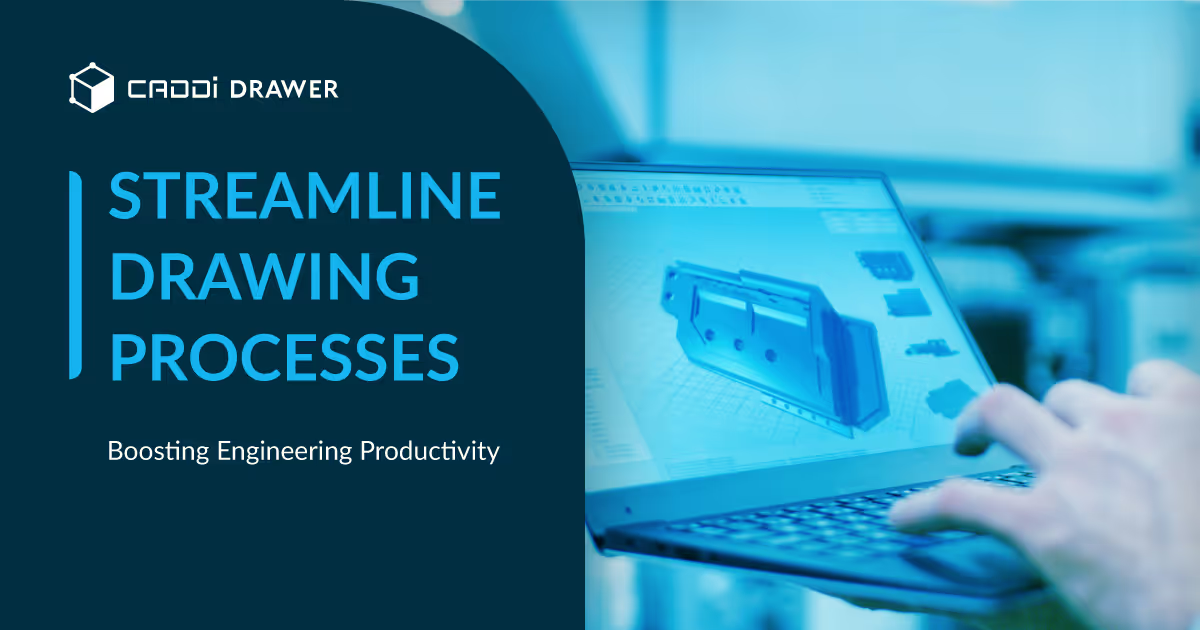

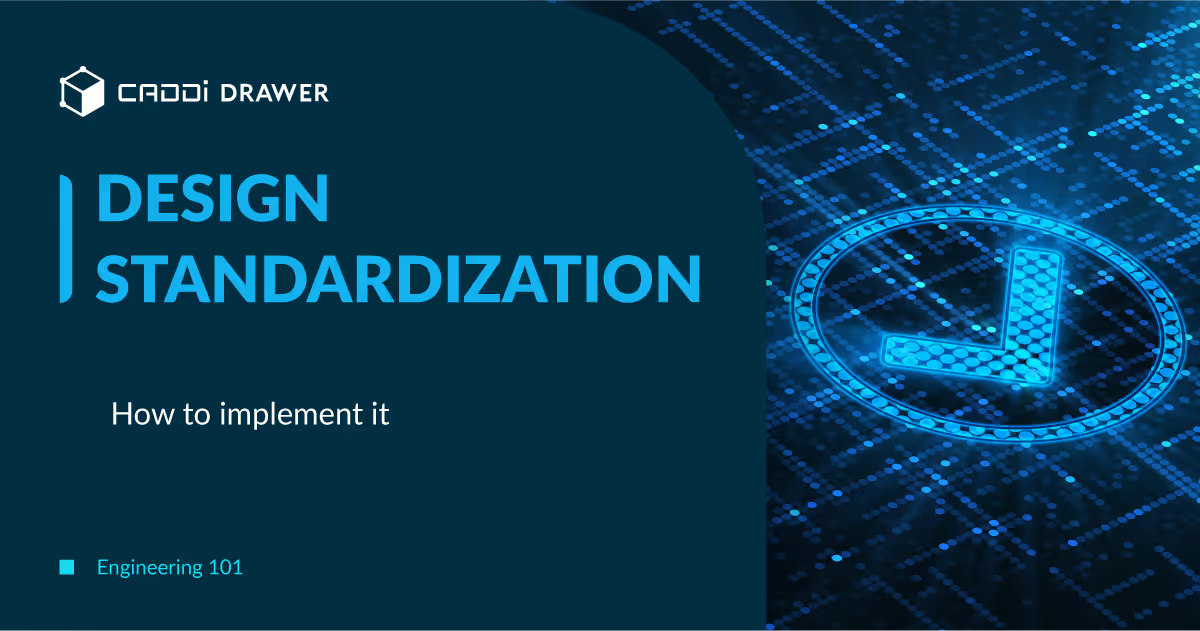

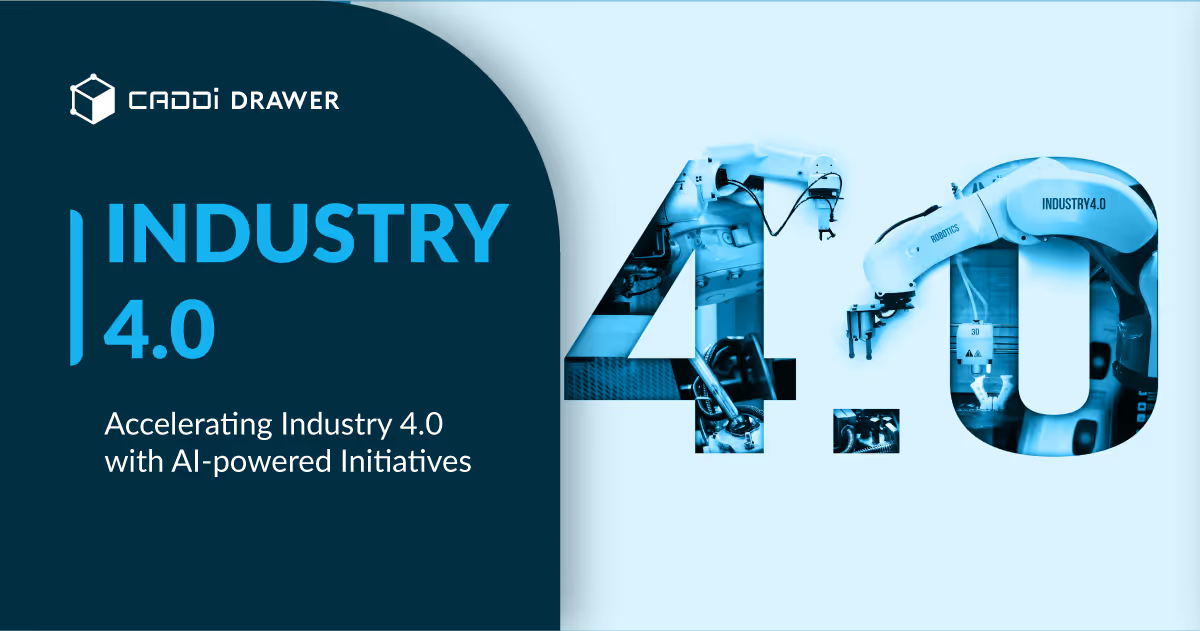



.svg)



.svg)
.svg)
.svg)


